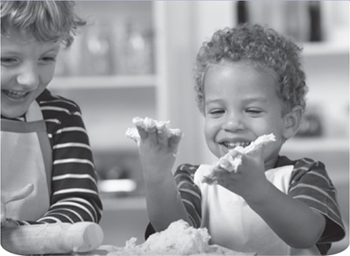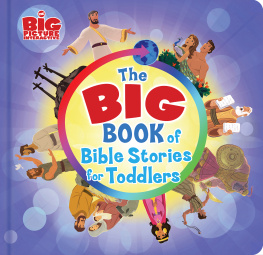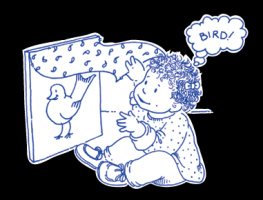Focus on Toddlers:
How-tos and What-to-dos when Caring for Toddlers and Twos
Also by Jennifer Karnopp:
Family Child Care Basics: Advice, Activities, and Information to Create a Professional Program
Elementos de un Cuidado de Nios Hogareo: Consejos, Actividades e Informacin para Crear un Programa Profesional
Focus on Babies: How-tos and What-to-dos when Caring for Infants
Focus on Toddlers:
How-tos and What-to-dos when Caring for Toddlers and Twos
by Jennifer Karnopp
Illustrations by Deb Johnson
Gryphon House, Inc.
Lewisville, NC
Copyright
2012 Jennifer Karnopp
Published by Gryphon House, Inc.
PO Box 10, Lewisville, NC 27023
800-638-0928; 877-638-7576 (fax)
Visit us on the web at www.gryphonhouse.com.
All rights reserved. No part of this publication may be reproduced or transmitted in any form or by any means, electronic or technical, including photocopy, recording, or any information storage or retrieval system, without prior written permission of the publisher. Every effort has been made to locate copyright and permission information.
Cover photograph courtesy of iStockphoto.
Illustrations by Deb Johnson.
Photographs courtesy of iStockphoto.
Library of Congress Cataloging-in-Publication Data
Karnopp, Jennifer.
Focus on toddlers : how-tos and what-to-dos when caring for toddlers and twos / by Jennifer Karnopp ; illustrations by Deb Johnson.
p. cm.
Includes index.
ISBN 978-0-87659-426-1
1. Child care. 2. Toddlers--Care. 3. Early childhood education. 4. Child care services. I. Title.
HQ778.5.K374 2012
649.1--dc23
2012004429
Bulk Purchase
Gryphon House books are available for special premiums and sales promotions as well as for fund-raising use. Special editions or book excerpts also can be created to specifications. For details, contact the Director of Marketing at Gryphon House.
Disclaimer
Gryphon House, Inc. cannot be held responsible for damage, mishap, or injury incurred during the use of or because of activities in this book. Appropriate and reasonable caution and adult supervision of children involved in activities and corresponding to the age and capability of each child involved is recommended at all times. Do not leave children unattended at any time. Observe safety and caution at all times.
Contents
A quality learning environment is important for the healthy development of young children. The toddler years are unique, and what works for preschool does not always work with toddlers. In this book, you will find information and ideas to help you create a quality early learning program specifically for the toddlers in your care. While safety is always an important concern of any program, safety issues, rules, and regulations are not the focus of this book. Instead, we will take a look at the many elements that make up a quality early learning program. We will explore ideas for your physical space, your daily routines, your relationships and interactions with children and their families, and the experiences you create. After reading this book, you will be able to create a center-based program perfectly suited to meet the unique needs of toddlers and their families and suited to you, the caregiver, as well.
As an early learning professional, you may feel pressured to teach toddlers or focus on their cognitive development. You want the children in your care to learn, and so it may be tempting to use materials designed for preschoolers and just water the activities down. But toddlers are not young preschoolers, and treating them as such is not developmentally appropriate. Their bodies and brains are developing rapidly. They need to spend their days learning to coordinate their bodies; to experiment with sounds, people, and objects; and to explore the world around them. This takes all of their energy and focus. As they do this, they are constantly making new discoveries and problem solving. To help toddlers grow and develop at their own pace, we need to encourage their independent explorations.
When we create a developmentally appropriate environment, we give children opportunities to practice and perfect discoveries that they have already made (the skills they have at their current level of development) and then encourage them to problem solve and try new things (to push themselves toward the next level of development). In other words, developmentally appropriate practice is the art of encouraging children to perfect old skills and to explore new ones without getting bored or frustrated.

To help you create a developmentally appropriate toddler program, we will first explore the role of the caregiver. We will examine the elements of a good environment and how to plan and evaluate your program and routine, and we will give you information on toddler growth and development. You will also find some basic information on working with children with special needs.
A young child develops and grows as a whole child, meaning that all areas of development are interconnected. As a toddler learns to manipulate objects, such as removing a toy from a shelf, she is developing motor skills. When she hears us name the object that she grabs, she is developing language skills. When she smiles at us as she carries the toy to us and we react with a smile, we are encouraging social skills and emotional development. The child then takes in all of these experiences and information to develop a better understanding of the object and of her own abilities. The toy is heavy, but I am able to carry it. It is safe to grab and carry. There is a word that describes the toy. When I carry the toy, my caregiver smiles at me. I feel good inside. Improved abilities in one area of development enable a child to further explore another area. And when a child can better explore the world, she can better understand the world. For this reason, the rest of this book is devoted to activities that will help you meet the needs of the toddlers in your care in all areas of their development. Here the words activity and experience are used interchangeably to mean a planned, open-ended experience. We have divided our activities into four sections.
 Social and Emotional: experiences that encourage social interactions and bonding and promote healthy emotional development
Social and Emotional: experiences that encourage social interactions and bonding and promote healthy emotional development
 Language: experiences that promote early language development and communication skills
Language: experiences that promote early language development and communication skills
 Motor: experiences that develop both fine and gross motor skills
Motor: experiences that develop both fine and gross motor skills
 Sensory: experiences that encourage sensory (touch, taste, smell, sound, sight) awareness
Sensory: experiences that encourage sensory (touch, taste, smell, sound, sight) awareness
Each activity also includes a tips section in which you will find ideas for natural, playful ways to incorporate cognitive development, as well as other developmental areas, into each activity. We have not included a separate activity section for cognitive development because a toddlers cognitive development depends on the development of each of the above areas. When a toddler piles blocks into a tower, she is using motor skills; when she knocks the tower down and hears and feels the crash, she is promoting her own sensory development. When these experiences are looked at together, she is exploring cause and effect. That understanding is a cognitive skill. Instead of a dedicated cognitive section, you will discover that the exploratory nature of each activity gives toddlers all kinds of opportunities to develop age-appropriate thinking skills.
Next page




 Social and Emotional: experiences that encourage social interactions and bonding and promote healthy emotional development
Social and Emotional: experiences that encourage social interactions and bonding and promote healthy emotional development